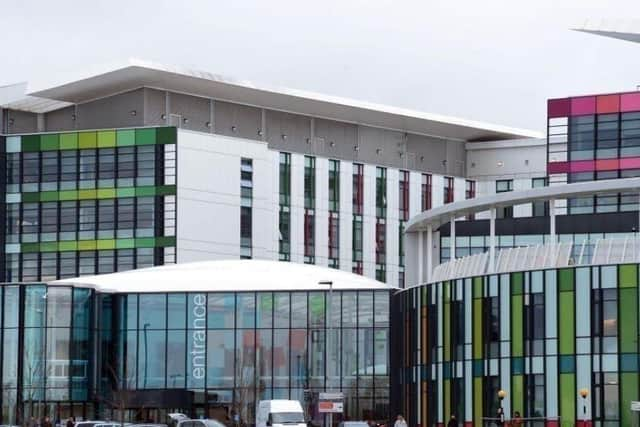Sherwood Forest Hospital A&E visits on the rise as 'unmet social needs' could be to blame
and live on Freeview channel 276
The British Red Cross said their work supporting people shows a “close link” between deprivation and demand for emergency health services.
And the charity has called on the government to release more funding to address wider health inequalities.
Advertisement
Hide AdAdvertisement
Hide AdNHS digital figures show 17,920 people living in the 10% most deprived areas – including Mansfield and Ashfield – visited A&E at Sherwood Forest Hospitals NHS Foundation Trust in the year to March 2023.


The 17,920 people accounted for 12.8% of all visits, while the figure stood at just 4.5% of people from the 10% least deprived backgrounds.
Trusts across England recorded 3.1 million visits by people who live in the most deprived areas – nearly double that of visitors from “affluent” areas who make up 1.6 million of the A&E visits.
Julia Munro, head of high intensity use service at the British Red Cross, said: “Unmet social needs, such as housing insecurity, unemployment and loneliness can cause a decline in health.
Advertisement
Hide AdAdvertisement
Hide Ad“If that continues, people can end up in frequent periods of crisis and needing ambulance and A&E services.”
Doctor Adrian Boyle, president of the Royal College of emergency medicine said: “There are many, often interconnected, reasons why waiting times in A&Es are longer in more deprived areas.
“Some are linked to the fact that people from lower socio-economic backgrounds tend to experience multiple and chronic health issues.
“Such as heart or lung disease which often require hospital admission, increasing pressure on local services.
Advertisement
Hide AdAdvertisement
Hide Ad“In addition, people from less well-off communities can also struggle to physically access other health care provision such as GPs.
“So may turn to A&Es as an open-all-hours alternative.”
Ellie Orton, chief executive of NHS charities together, said: “Sadly, people who live in more deprived areas can experience worse health.
“This demand means where someone lives can affect how they access the emergency care they need, when every second counts.
“We are working with NHS partners to help tackle health inequalities and make sure extra support is provided where it is needed most.”
Advertisement
Hide AdAdvertisement
Hide AdThe figures also showed children aged under 19 made 31,300 visits to the A&E at Sherwood Forest Hospitals Trust in the year to March.
Whereas adults visited the department 108,400 times. Three-quarters of people – 75% – received care in less than or within four hours.
The department for health and social care said it was taking “immediate action” to fast-track access to care.
A spokesperson said: “Our urgent and emergency care recovery plan aims to deliver one of the fastest and longest sustained improvements in waiting times in NHS history, including creating 5,000 permanent staffed hospital beds by winter.
Advertisement
Hide AdAdvertisement
Hide Ad“The NHS has already rolled out over 9,800 virtual ward beds to care for patients in their own homes and ease pressure on hospitals, and is on track to reach 10,000 ahead of winter.”
Overall, Sherwood Forest Hospitals Trust had 139,695 unplanned attendances in the year to March – an increase from 125,185 for the same period in 2021-22.
Sherwood Forest Hospitals Trust has been approached for a comment.